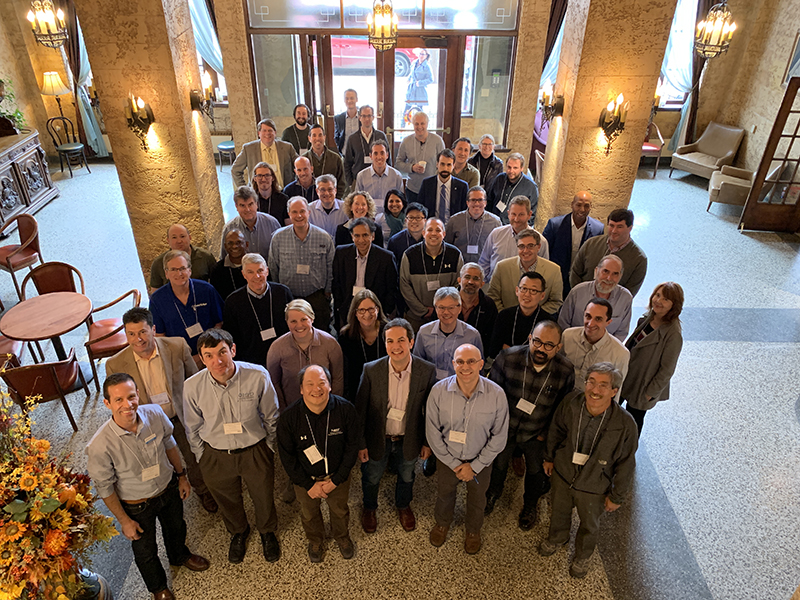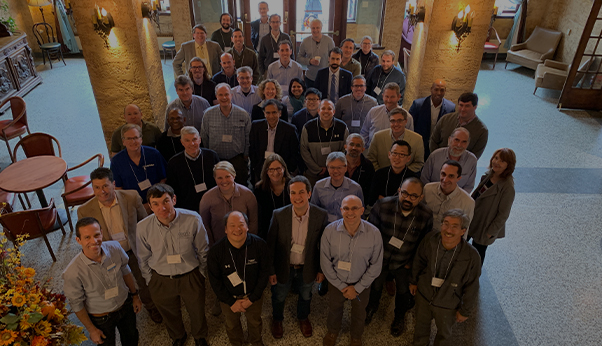New consortium supported by the Department of Commerce and over 70 U.S. companies to enable and grow the U.S. quantum industry and associated supply chain
Bozeman MT, November 6-7, 2019: The Quantum Economic Development Consortium (QED-C) held a workshop to identify cryogenic technology advances that will enable a ten-fold improvement in quantum information science and technology (QIST) in the next decade—10X10. Quantum computing based on superconducting technologies is just one example of a quantum application that requires cooling to ultra-low temperatures. QED-C participants, who are from across the quantum ecosystem, will use the workshop output to create a roadmap for cryogenic technologies for QIST applications. For more about QED-C, go to https://quantumconsortium.org/.

Attendees at the QED-C Workshop on Cryogenic Technology for QIST held in Bozeman, Montana Nov 6 and 7, 2019.
Photo credit: Madison Cebuhar
A select group of experts gathered in Bozeman to assess needs and develop a roadmap for cryogenic technologies to accelerate QIST R&D and commercialization. Top U.S. cryogenic companies participated, including Advanced Research Systems, ColdEdge, Creare, Cryomech, HPD, Janis Research, Lake Shore Cryotronics, Montana Instruments, and Quantum Design, as well as experts from the U.S. Department of Commerce’s National Institute of Standards and Technology (NIST). A cross-section of companies that are developing quantum-based systems that require advanced cryogenic cooling also participated in the workshop.
“Cryogenics is slowing progress toward the establishment of a quantum industry, which will have both economic and national security implications, and which will create benefits to mankind that we can only dream of today,” noted Luke Mauritsen, Founder and CEO of Montana Instruments. Workshop participants identified cryogenic capabilities that, if realized, would accelerate the pace of research and innovation and enable development and deployment of quantum technologies for sensing, communications, and computing. “The workshop brought together the cryo ‘users’ in the QIST community and cryo ‘makers’ with the goal of helping manufacturers better understand the challenging requirements of quantum systems,” QED-C Associate Director Celia Merzbacher said. “Connections that were made may lead to breakthroughs that can have real impact.”
Top needs that emerged from the workshop included faster cycle time, which in some cases can take days, to increase the rate of research. Reductions in size, weight and power requirements would enable commercial applications that today are not feasible. For many at research universities and in small companies, cost of the systems that are required for certain applications, which can be more than $1 million, is a barrier to entry. Finally, the dwindling pipeline of relevantly educated workers is a growing problem for companies in the field.
The workshop, which was supported by NIST and the State of Montana as well as QED-C participating companies, will inform QED-C and NIST on strategies and R&D investments for advancing cryogenics to enable growth in the quantum industry. “There is a chicken and egg problem,” according to Sae Woo Nam, staff scientist at NIST and a leading expert in advanced cryogenics. “The quantum market is still small, so cryo companies can’t justify investing in the necessary R&D, which is slowing advances in quantum application development.”
This was the first QED-C workshop on an enabling technology for advancing the U.S. quantum industry. Such workshops and roadmaps will guide consortium efforts and provide members insight on the quantum industry.

